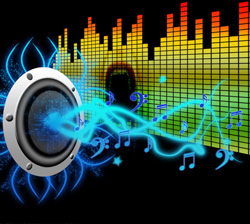You’ve balanced your tracks, you’ve got everything sitting nice and sounding punchy and defined – now what? How can you add a little pop and life to the mix?
Here are some techniques I use to excite and enhance sounds in a mix – some are obvious, some are a little tricky.
1) Exciters and enhancers. Pretty straightforward, but harmonic exciters or enhancers are a quick and easy way to give a little spark to your sound.
Just be careful – a little goes a long way. Exciters tend to give an immediate gratification by focusing on colorful harmonics in the sound – but this is often at the expense of the rest of the frequency domain.
The effect shouldn’t be a substitute for EQ. Once you’re making distinct frequency boosts with one of these tools, it’s probably too much.
2) Saturation. Saturation is like the little cousin of overdrive. It gives you just enough to liven up the texture of whatever you’re saturating.
Saturation is not limited to emulation plugins – any piece of hardware can be used as a saturator – and a worthwhile experiment is to run a signal through a preamp and crank the gain and listen for how the texture changes.
Really nice pre-amps overdriven a bit can bring out certain textures and frequencies in a cool and unique way.
3) Parallel distortion. Say what? Clone your source, and run the clone through distortion. From there, EQ the distorted clone to highlight the frequency you want to enhance.
Need thicker mids? Hi-pass and low-pass the clone. Need excited upper mid-range? Throw on a hi-pass at around 1.5 kHz. Then take the cloned signal and start blending it in against the original.
About 15 dB down from the original you’ll start to hear a just noticeable change in the texture and liveliness of the original. A little pinch goes a long way here.
4) Short reverb. Early reflection heavy, short tail reverbs have a unique power on a dry source. What we hear in the reverb, we quickly prescribe onto the dry signal.
In other words, if you need to make a source brighter, but regular EQ methods just aren’t working out, you can use a short, bright, reverb to make the high end of your dry source come alive.
I prefer plate emulations for this method, rooms and halls tend to be too “open” sounding.
5) Modulation. Frequency based modulation in particular, such as the Enigma plugin from Waves, or flangers and phasers can be used in really interesting ways. These effects tend to be a bit more dramatic than the other one – but sometimes a sound needs to come back from the dead.
Unfortunately, there’s too many options to really describe in one article, but play around and you’ll find all sorts of gems.
Matthew Weiss is the head engineer for Studio E, located in Philadelphia. Recent credits include Ronnie Spector, Uri Caine, Royce Da 5’9” and Philadelphia Slick.
Be sure to visit the Pro Audio Files for more great recording content. To comment or ask questions about this article go here.



















